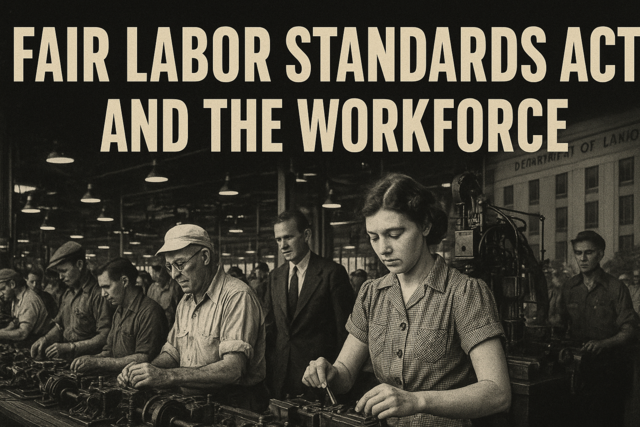
We already understand that gender affects conflict, and that these dynamics surrounding conflict occur at the societal and individual levels. Understanding the role of gender in conflict is best accomplished through an analysis of individual levels, meaning personal, self-interactional levels--relationships with others--and the societal level, meaning relationships to institutions.
We have to remember that gender refers to socially and politically constructed roles, behaviors, and attributes that a given society considers most appropriate and valuable for men and women (personal and interactional), and that it simultaneously functions as a system of power, which shapes the lives, opportunities, rights, relationships, and access to resources (institutional). Despite the struggle for women's equality and the assertion (by some) that women are, in fact, equal to men, our explicit (conscious) and implicit (unconscious) biases still maintain expectations of certain societal norms
Norms are standards or patterns of social behavior to which people may experience significant pressures to conform. Gender norms are sets of expectations about how people of each gender should behave. They are not determined by biological sex but rather are specific to particular cultures or societies and often to particular social groups within those societies. What may be expected behavior for a man or woman in one culture may be unacceptable in another.
Masculinity refers to anything that is associated with men and boys in any given culture, just as femininity refers to that which culturally is associated with women and girls. Ideas about what is masculine and what is feminine vary over time, as well as within and between cultures. In most societies, those attributes and behaviors seen as masculine are more socially valued than those viewed as feminine.
It is important to point out that gender norms are not just about the attitudes and beliefs held by individuals but are produced and perpetuated by political, economic, cultural, and social structures, including education systems, the media, religious institutions, welfare systems, and security and justice systems. Also, gender norms often govern not only performance expectations but also conflict resolution processes in the workplace.
Although times are changing and expectations are loosening, women and men still are socialized within fairly rigid gender expectations. Institutions such as the church, the family, and the law reproduce these biases in norms, rules, and laws, and they reinforce the differences afforded men and women politically, economically, and culturally. The institutional systems that enforce gender norms directly create dispute, sustain and escalate other conflicts, and invade all other human interactions.
At the societal level, assumptions about male superiority pervade our thought processes whether we like it or not. The life experiences on which the claims of common dominant ideologies have been founded, such as "all men are created equal," have been the experiences of men, not women, and dictates that patriarchy, a social system in which power is held by men, through cultural norms and customs that favor men and withhold opportunity from women, controls reality.
What does this mean for managing conflicts in the workplace? It means that restrictive gender norms may surface in conflicts in the ways that parties interpret and give meaning to the conflict. Researchers have found that differences in workplace disputes for men and women are based on the social construction of the workplace conditions, meaning who's in charge, how power is distributed, how communication is managed, the way that women formulate their grievances--through a formal process and through social networks--and the ways that supervisors translate them as reliable or unreliable narrators of their own experience.
Although both men and women have problems in the workplace that are associated with interpersonal relations, women report more personality conflicts than men and seem more sensitive to them. Women also experience more conflicts over gender role stereotypes and norms, finding that gender role stereotypes cause problems if the stereotype has little to do with the requirements of the job.
The issue of this type of prescriptive gender role stereotyping was at the center of the 1990 lawsuit (Price Waterhouse vs. Hopkins) in which a female management consultant was passed over for partnership because partners at Price Waterhouse had called her overbearing, macho and abrasive, and had said she would have a better chance of becoming a partner if she would wear makeup and jewelry, and walk, talk, and dress ''more femininely.'' The judge ultimately sided with the plaintiff and awarded her back pay and said that Price Waterhouse would be required to make Ms. Hopkins a partner as of July 1st, 1990 and pay her as much as the average management consultants who were admitted to the partnership in 1983 when she was turned down. This case has become a cornerstone for gender bias in the workplace and has established legal precedent that bars organizations from prescribing appearance, dress, and/or behavior on the basis of sex.
This conflict made it all the way through the court system before it was resolved. Even then, the problem persisted as Price Waterhouse appealed the judge's decision despite the fact that they had been judged wrong for denying Ms. Hopkins a partnership solely based on their narrow views of what was appropriate "feminine" behavior. The conflict began with a prescriptive stereotype about women that was applied in a way that defined Ms. Hopkins as not capable of being a partner not because she couldn't do her job, but because she didn't act in the way that the other partners wanted her to act and/or dress. When she objected, rather than stopping to examine the assumptions that had been made about her appearance and her femininity, the company determined that she was the problem.
In the workplace, gender also affects dispute-handling mechanisms. The processes used to resolve disputes for women often are shown to be less effective than for men and have negative consequences even when the solutions are designed to be favorable or neutral for women. For example, women were transferred laterally more often instead of resolving the dispute, and these lateral transfers have a direct impact on women's earnings in the workplace. These types of transfers also have the effect of labeling women as "troublemakers" even when they are the ones filing the complaints about harassment.
Women and men also differed in the ways that they talk about their conflicts. Women talk in-depth and at length about the context of the dispute, particularly focusing on their involvement in the relationship with the other party and talk about fairness in a way that incorporated both their material interests. Women also tend to look for ways to find middle ground and allow both sides to maintain dignity. Men tend to use more rational, linear, and legalistic language to talk about their disputes, and focus much less on the balance of fairness than on individual responsibility and on what needs to be done to resolve the situation quickly. These differences in approaches to conflict resolution can have enormous consequences when women do not occupy positions of power and/or are not supported by the organization.
In other words, there are significant problems when it comes to navigating and negotiating conflict in the workplace. However, all hope is not lost! Experts have agreed that one of the ways in which to deal with and resolve conflict in the workplace has to do with following a six-part approach for approaching conflict. The "6Cs" as they are termed are designed to offer options for anyone dealing with conflict, not just women.
Approach 1: Communicate. This approach is designed to help people who hold conflicting views on divisive and emotional issues come together and have a conversation. While this approach will not necessarily resolve the conflict or cause participants to change their views significantly, it does offer the possibility of opening the lines of communication and helping people see each other as people rather than enemies.
Approach 2: Circumvent. This approach advocates temporarily avoiding the conflict or finding a way around it when the situation is too volatile or the timing is bad and people need to cool off before being able to discuss the conflict in a productive manner. Sometimes avoiding the conflict is the only way around it though this approach should not be used for conflicts that involve harassment or abuse.
Approach 3: Confront. In some instances, it may be necessary to be assertive and take action immediately. It may be a matter of speaking up for yourself or someone else, someone's personal safety may be at risk, or the conflict may result in someone being denied respect or basic human rights. Asking the person what their intention was or what response they hoped to get from their comments often stops the conflict immediately. Confrontation does not need to be combative to be effective.
Approach 4: Conform. There may be times when relationships are more important than the issue and smoothing over conflict may be the best short-term solution. This solution will not help resolve serious workplace conflicts, but it may give the parties time to think things over and come back at a later time to discuss the underlying issues.
Approach 5: Compromise. This approach is designed to allow all parties to give a little and come to an agreement that will best meet the needs of all parties involved. Compromise allows everyone to have a say in creating possible solutions and when done well, it gives everyone a sense of having resolved the conflict.
Approach 6: Collaborate. This approach eliminates the need to take sides or compromise because it allows people to reach agreement by finding common ground. However, collaboration also requires creativity and "buy-in" from everyone or it will not work.
Managing conflict in the workplace requires the ability to step back and take a look at the situation from multiple perspectives and then fashion a solution that best meets the needs of the employees involved as well as the company. Sometimes, this process is clear cut and can be resolved with a quick decision. But other times, the process is complex and requires careful evaluation of all of the options. This can become even more complex when implicit bias is at the base of the conflict and requires people in positions of power to examine the core beliefs of those in conflict before making decisions as to how to proceed.
Conflict in the workplace is a difficult thing to navigate, but if we develop an understanding of how men and women's different experiences and communication styles can be mediated through a variety of approaches to conflict management, it may lead to understanding conflict differently and therefore approach conflict resolution differently.






























